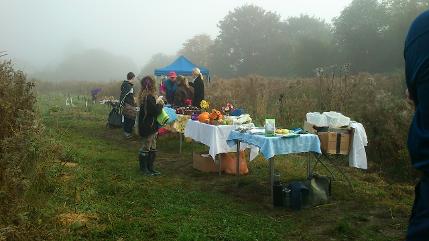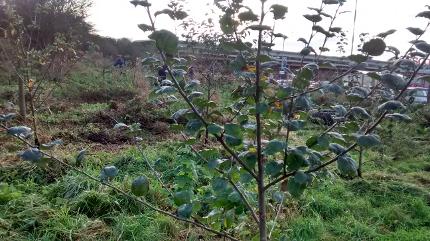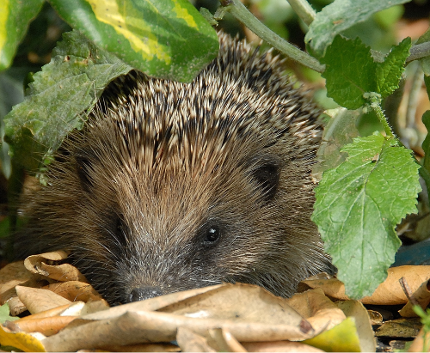
APPLE DAY
The picture to the left shows Apple Day 2012. The day at the Community Orchard was very autumnal - misty and cold - but many people came along to see the apple trees and to enjoy the fruit, competitions, and tea and cakes.
ORCHARDS AND APPLE DAY
Orchards and fruit trees have inspired and nourished art, painting, poetry and literature. Orchards make beautiful and distinctive landscapes. Orchards were once common throughout Britain. Place names frequently bear testimony to the past importance of orchards and fruit trees. Many old varieties and types of fruit have local associations. Many are named after farms where the fruit was first found or after local people who raised or discovered them. Orchards are valuable places for wildlife - animals, birds, insects and plants. Bees thrive in orchards and perform an invaluable job in pollinating the flowers of the trees in spring to ensure a good crop later in the year. Orchards yield more than just fruit and honey. Wood from fruit trees is much valued by craftsmen.
Orchards have been disappearing at an alarming rate. So we need to find a place for orchards in the future. A greater diversity of home grown fruit - apples, plums, cherries, nuts - should be available in our local shops. Orchards are places where fruit is produced as well as places of local cultural importance, for wild-life, the landscape and for recreation. We could have orchards for schools, streets, hospitals, and in and around our towns and villages. As dlimate change continues and takes hold so apples, peaches, nuts, and figs could become commonplace in many parts of Britain.
Home Grown Hornsea (HGH) planted an orchard in 2012, on the land around Tesco's car park. Taking inspiration from the work of Common Ground, HGH held the first Apple Day in October 2012. The Day celebrated the varieties of fruit in the orchard.
Below: the Orchard in November 2014 and a local Hornsea hedgehog


